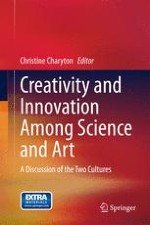2015 | OriginalPaper | Buchkapitel
7. Creative Engineering Design: The Meaning of Creativity and Innovation in Engineering
verfasst von : Christine Charyton
Erschienen in: Creativity and Innovation Among Science and Art
Verlag: Springer London
Aktivieren Sie unsere intelligente Suche, um passende Fachinhalte oder Patente zu finden.
Wählen Sie Textabschnitte aus um mit Künstlicher Intelligenz passenden Patente zu finden. powered by
Markieren Sie Textabschnitte, um KI-gestützt weitere passende Inhalte zu finden. powered by
